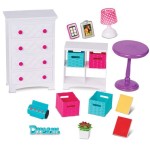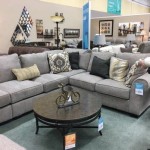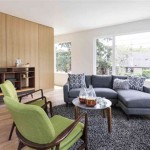How to Pick Living Room Furniture
Selecting living room furniture represents a significant investment in both comfort and the overall aesthetic appeal of a home. The living room often serves as a central gathering space for family and guests, making the selection of furniture a crucial element in creating a welcoming and functional environment. A thoughtful approach to choosing furniture, considering factors such as room size, lifestyle, and preferred style, can ensure a harmonious and practical living space. This article provides a guide to navigate the complexities of furniture selection, equipping individuals with the knowledge to make informed decisions.
Assessing Room Size and Layout
The dimensions of the living room directly impact the type and size of furniture that can be accommodated. Before beginning the selection process, accurate measurements of the room are essential. This includes not only the length and width of the room, but also the height of the ceilings, the placement of windows and doors, and any architectural features that might influence furniture placement. A floor plan, even a simple sketch, can be invaluable in visualizing the layout and determining the optimal arrangement of furniture.
Scale is a critical consideration. Overly large furniture can overwhelm a small room, making it feel cramped and claustrophobic. Conversely, furniture that is too small can appear insignificant in a larger space, creating a sense of emptiness. To avoid these pitfalls, it's important to choose furniture that is proportionate to the room's dimensions. Pay attention to the depth and height of sofas and chairs, as these dimensions can significantly impact the perceived spaciousness of the room.
Traffic flow should also be considered when planning the layout. Furniture should be arranged to allow for easy movement around the room, without creating obstacles or bottlenecks. Pathways should be clear and unobstructed, allowing people to move freely from one area to another. This is particularly important in high-traffic areas, such as the entryway or the path to the kitchen or dining room.
The arrangement of furniture can also influence the room's functionality. Consider the primary uses of the living room. If it is mainly used for relaxing and watching television, a comfortable seating arrangement focused on the television screen might be ideal. If it is used for entertaining, a more open and conversational layout might be more appropriate. Consider how the furniture can be arranged to support these different activities.
Finally, consider the existing architectural features of the room. Fireplaces, windows, and built-in shelving can all influence the placement of furniture. A fireplace, for example, often serves as a natural focal point, and the seating arrangement should be designed to complement this feature. Windows can provide natural light and views, so it's important to avoid blocking them with furniture.
Determining Lifestyle and Functionality
The selection of living room furniture should be heavily influenced by the lifestyle and needs of the occupants. A household with young children, for example, will have different requirements than a household of empty nesters. Considerations such as durability, ease of cleaning, and safety are paramount when children are present. Similarly, pet owners will need to choose durable fabrics that can withstand scratches and stains.
Consider the primary activities that take place in the living room. Is it primarily used for relaxing and watching television? Or is it a space for entertaining guests? The answers to these questions will dictate the type of furniture that is needed. If the living room is primarily used for relaxation, a comfortable sofa, recliner, and coffee table might be sufficient. If it is used for entertaining, a more formal seating arrangement with ample seating and a bar area might be more appropriate.
Storage needs should also be considered. Living rooms often serve as a repository for books, magazines, and other items. Shelving units, cabinets, and coffee tables with storage compartments can help to keep the room organized and clutter-free. Consider the types of items that you need to store and choose furniture that provides adequate storage space.
Multifunctional furniture can be particularly useful in smaller living rooms. Sofa beds, ottomans with storage, and coffee tables that can be converted into dining tables can all help to maximize space and functionality. These types of furniture can be particularly useful in apartments or condos where space is limited.
Accessibility is another important consideration, especially for individuals with mobility issues. Furniture should be easy to get in and out of, and pathways should be wide enough to accommodate wheelchairs or walkers. Consider the height of the furniture and the firmness of the cushions. Avoid furniture with low backs or deep seats, as these can be difficult to get out of.
Selecting a Cohesive Style and Aesthetic
The aesthetic style of the living room furniture should complement the overall style of the home and reflect the personal tastes of the occupants. There are a wide range of styles to choose from, including traditional, modern, contemporary, bohemian, and rustic. Each style has its own unique characteristics and can create a different atmosphere in the room.
Traditional style is characterized by classic lines, ornate details, and rich fabrics. Furniture in this style often features carved wood, tufted upholstery, and decorative accents. The color palette tends to be warm and inviting, with shades of gold, burgundy, and brown. Traditional style creates a formal and elegant atmosphere.
Modern style is characterized by clean lines, minimalist designs, and a focus on functionality. Furniture in this style often features sleek surfaces, geometric shapes, and neutral colors. The color palette tends to be cool and restrained, with shades of gray, white, and black. Modern style creates a contemporary and sophisticated atmosphere.
Contemporary style is a blend of modern and traditional elements. Furniture in this style often features clean lines and minimalist designs, but it also incorporates softer textures and more organic shapes. The color palette tends to be neutral, with pops of color used to add visual interest. Contemporary style creates a comfortable and stylish atmosphere.
Bohemian style is characterized by a relaxed and eclectic mix of furniture, patterns, and textures. Furniture in this style often features vintage or antique pieces, ethnic textiles, and natural materials. The color palette tends to be warm and vibrant, with shades of orange, red, and yellow. Bohemian style creates a casual and artistic atmosphere.
Rustic style is characterized by natural materials, earthy colors, and a focus on simplicity. Furniture in this style often features wood, stone, and leather. The color palette tends to be warm and muted, with shades of brown, beige, and green. Rustic style creates a cozy and inviting atmosphere.
Once a style has been selected, it's important to choose furniture that complements that style. This includes not only the overall design of the furniture, but also the materials, colors, and textures. Consider how the different pieces of furniture will work together to create a cohesive look. Fabric swatches and paint chips can be helpful in coordinating the colors and textures of the furniture.
The choice of accessories can also play a significant role in creating a cohesive style. Rugs, curtains, lamps, and artwork can all enhance the overall aesthetic of the room. Choose accessories that complement the furniture and reflect the chosen style. For example, a traditional living room might feature ornate lamps and framed artwork, while a modern living room might feature minimalist lamps and abstract art.
Ultimately, the goal is to create a living room that is both functional and aesthetically pleasing. By carefully considering room size, lifestyle, and style preferences, individuals can create a living space that is both comfortable and stylish. Investing time and effort into the furniture selection process will yield a living room that truly reflects the personality and needs of the occupants.
Selecting living room furniture requires careful consideration of various factors. By meticulously planning, measuring, and assessing personal needs and preferences, individuals can establish a living space that is both functional and aesthetically pleasing, contributing significantly to the overall comfort and enjoyment of their home.

How To Choose Living Room Furniture 15 Steps With S

5 Tips To Pick The Right Living Room Seating Pottery Barn

How To Choose The Best Seating For Your Living Room Erin Spain

Six Things To Consider When Choosing Living Room Furniture

What To Consider When Buying Your Living Room Furniture Pottery Barn

Choosing Living Room Furniture Beautiful Homes

How To Pick The Right Furniture For Your Home My Design Process

Guide To Choosing Living Room Furniture In Singapore Interior Times

How To Choose Furniture For Your Home Pick

Perfect Living Room Furniture Tips Al Huzaifa
See Also








